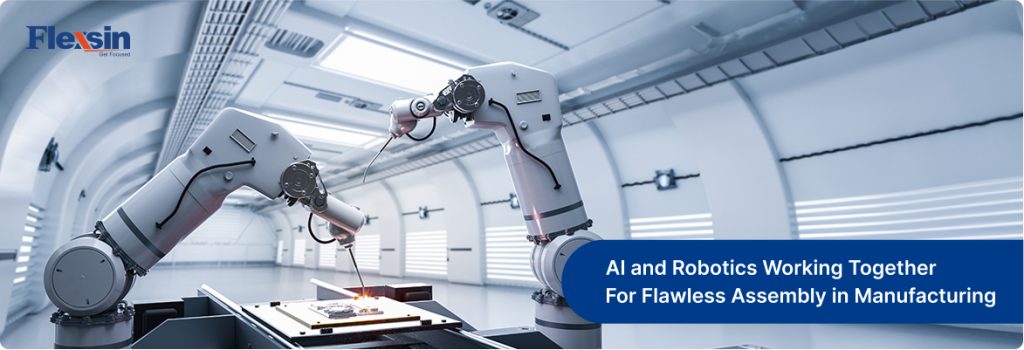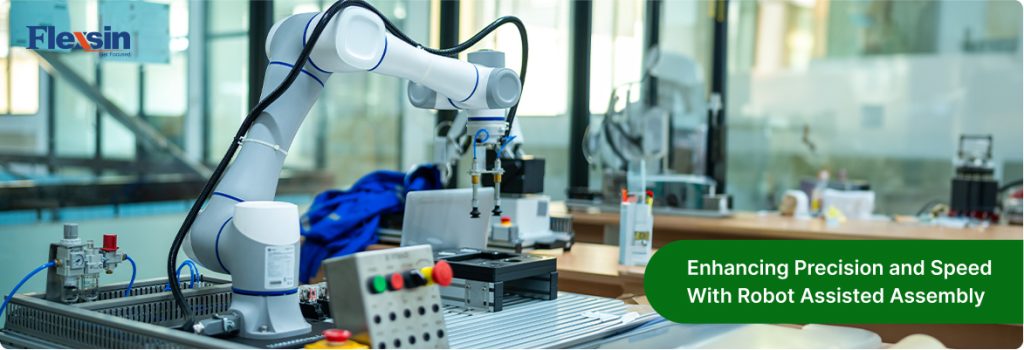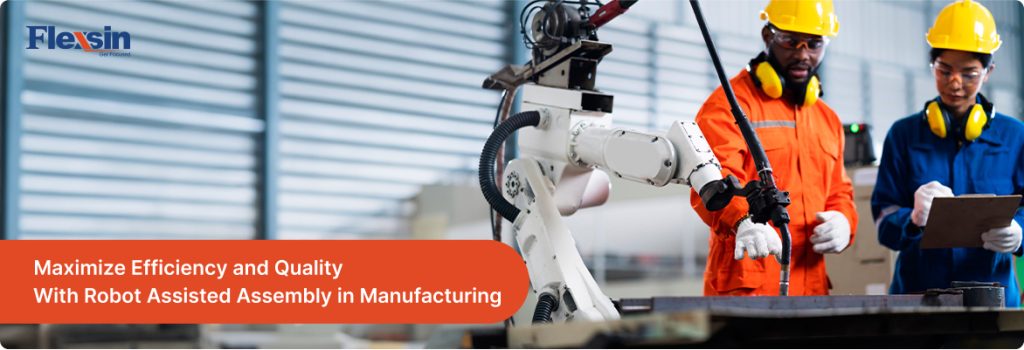In 2026, AI robotic automation is set to reshape manufacturing and industries at an unprecedented scale. With businesses striving to stay competitive, the challenge often lies not in the promise of automation itself but in its practical application. AI robotic automation consulting services are crucial to navigating the complexities of integration, customization, and scalability. Yet, many companies struggle to implement AI-driven solutions effectively, resulting in underwhelming results and missed opportunities.
If you’re one of these businesses, you’re not alone. Customizing AI robotic automation for unique industry needs, ensuring seamless integration with existing systems, and scaling these solutions to meet long-term goals can seem like insurmountable challenges. The solution? Partnering with experienced AI robotic automation consultants who understand the intricacies of this transformative technology.
1. How AI Robotic Automation Consulting Can Overcome Key Challenges
AI robotic automation is a powerful tool, but implementing it successfully is far from simple. Many organizations face specific hurdles when integrating this technology into their operations. Let’s take a closer look at the top challenges businesses encounter and how AI robotic automation consulting services can help overcome them.
Challenge 1: Customization of AI Solutions for Specific Business Needs
Every industry is unique, and the same goes for each business within those industries. What works for one organization might not work for another. One of the biggest challenges in AI robotic automation is customizing solutions that align perfectly with a business’s existing processes, systems, and objectives.
Solution:
AI robotic automation consultants can develop tailored solutions that address a company’s specific operational needs. Flexsin’s consulting services specialize in creating custom AI frameworks for businesses, ensuring that each solution fits seamlessly into the existing infrastructure. Whether it’s through robot-assisted assembly or self-learning robots, the goal is to ensure that automation enhances productivity without disrupting operations.
Example:
A manufacturing company needed to automate its quality inspection process. A standard robotic system wasn’t flexible enough to handle their specific product types. After consulting with Flexsin, the company implemented a custom AI-powered system that utilized computer vision to identify defects at a level of precision previously unattainable, reducing inspection time by 40%.
Challenge 2: Integrating AI Systems with Existing Infrastructure
AI robotic automation requires compatibility with a company’s existing systems – whether it’s legacy software, machinery, or enterprise resource planning (ERP) platforms. Integration without disrupting business continuity is a significant challenge.
Solution:
AI robotic automation consultants specialize in seamless integration. With expertise in robotic process automation (RPA) and industrial AI, consultants can ensure that AI-driven systems work harmoniously with your current tools. Flexsin’s team is experienced in integrating cutting-edge robotics into existing workflows, allowing businesses to take full advantage of automation without the headaches of downtime or system failures.
Example:
A warehouse management company was struggling with outdated software that couldn’t support their growing automation needs. Flexsin helped integrate an AI-driven automation system that communicated effortlessly with the company’s warehouse management system (WMS), improving operational efficiency by 25% within just six months.

Challenge 3: Scaling Automation Solutions to Meet Future Growth
While businesses may see initial success with AI robotic automation, scaling these solutions to meet increasing demands can present significant challenges. As a company grows, its automation needs will evolve, and without a proper strategy, businesses may face issues with performance, cost, or capacity.
Solution:
Flexsin’s AI robotic automation consultants provide scalability-focused solutions that grow with your business. By implementing AI that can learn and adapt to changing demands, businesses are empowered to scale their automation efforts effectively. From AI-enhanced automation in the production line to robotic AI frameworks that optimize warehouse processes, scalability is integrated into the core of the solution.
Example:
A company in the automotive industry wanted to scale its production line, which relied heavily on manual assembly. Flexsin implemented a robot-assisted assembly system that could quickly adapt to different vehicle models. As demand increased, the system scaled effortlessly, maintaining productivity without the need for significant capital investment in additional infrastructure.
2. Strategic Benefits of AI Robotic Automation for Manufacturing and Industries in 2026
As we move into 2026, AI robotic automation continues to prove itself as an indispensable technology for businesses across various industries. From improving efficiency to fostering innovation, AI robotic automation presents enormous opportunities for manufacturing companies and other industries looking to stay ahead of the curve.
Benefit 1: Increased Operational Efficiency and Cost Savings
One of the most compelling reasons to adopt AI robotic automation is the significant improvement in operational efficiency and the potential for cost savings. By automating repetitive tasks and optimizing workflows, businesses can not only speed up production but also reduce human error and the associated costs.
Solution:
Flexsin’s AI robotic automation consulting services focus on streamlining operations through intelligent systems. This means integrating AI that can predict bottlenecks, reduce waste, and optimize the use of resources. The result is reduced operational costs and a faster, more efficient workflow.
Example:
A global electronics manufacturer was facing rising production costs due to inefficiencies in its supply chain. After implementing AI-driven automation solutions, the company achieved a 15% reduction in operational costs while improving production speed by 30%. AI systems helped forecast material shortages and adjust production schedules automatically.

Benefit 2: Enhanced Decision-Making with AI-Powered Insights
AI robotics not only automate tasks but also provide invaluable data-driven insights that can drive better decision-making. By leveraging AI in robot decision-making, businesses can access real-time analytics that guide everything from inventory management to supply chain adjustments.
Solution:
Flexsin’s AI robotic automation consultants focus on integrating advanced robotics with AI that can make decisions based on real-time data. These solutions help businesses identify potential issues before they become problems and continuously optimize their operations.
Example:
A logistics company used AI-powered robot perception and sensing systems to monitor traffic and weather patterns. By integrating this data, the system automatically adjusted delivery routes, reducing fuel costs by 18% and improving delivery times by 20%.
Benefit 3: Future-Proofing Your Business for 2026 and Beyond
With rapid technological advancements, industries need to adopt solutions that can evolve with changing business landscapes. AI robotic automation offers scalable, self-learning solutions that adapt as your company grows, ensuring that your systems are ready for the challenges of the future.
Solution:
Flexsin’s AI robotic automation consulting focuses on creating scalable and adaptive systems that can grow with your business. Whether you’re expanding into new markets or increasing production volumes, Flexsin helps ensure that your automation solutions are future-proof and can handle increasing complexity.
Example:
A pharmaceutical company expanding into global markets was struggling to meet demand due to limitations in its packaging line. After adopting AI robotic automation solutions, the company was able to scale its packaging processes and meet increased global demand without compromising quality. The system also self-learned from production data, optimizing speed and quality over time.

3. The Future of AI Robotic Automation in 2026
In conclusion, AI robotic automation holds tremendous promise for manufacturing and industries in 2026. By tackling key challenges such as customization, integration, and scalability, businesses can unlock significant improvements in efficiency, decision-making, and future growth. AI robotic automation consulting services are essential to navigating these complexities and ensuring successful implementation.
The future is bright for those who embrace AI-driven automation today. Companies that invest in AI robotic automation consulting services now will be poised to reap the benefits of innovation, productivity, and cost savings in the coming years.
Flexsin has developed smart robotic automation systems for its client viz. Jamis Bikes, Daikin, and FPI Future Pipeline Industries, that cut inspection time by up to 40%, reduce operational costs by 15%, and scale effortlessly for their growing business needs.
Start Your AI Robotic Automation Transformation Today
Ready to leverage AI robotic automation for your business? Don’t wait for the future – make the shift today and stay ahead of the competition in 2026 and beyond. Contact Flexsin Technologies for a customized consultation and let our expert team guide you through the process of implementing AI robotic automation solutions tailored to your unique needs.


 Munesh Singh
Munesh Singh